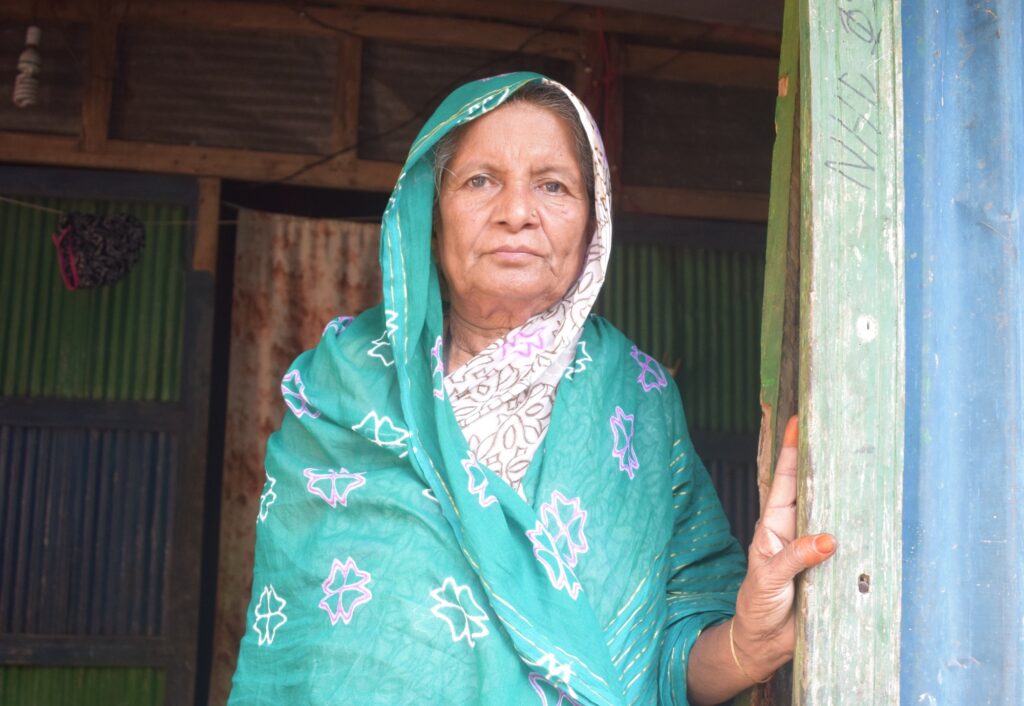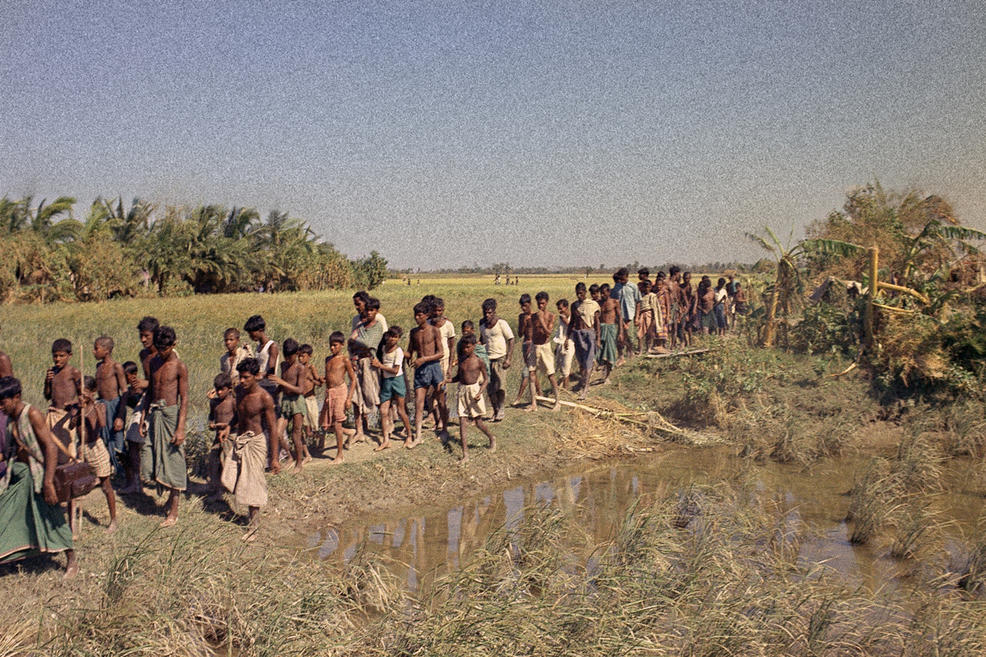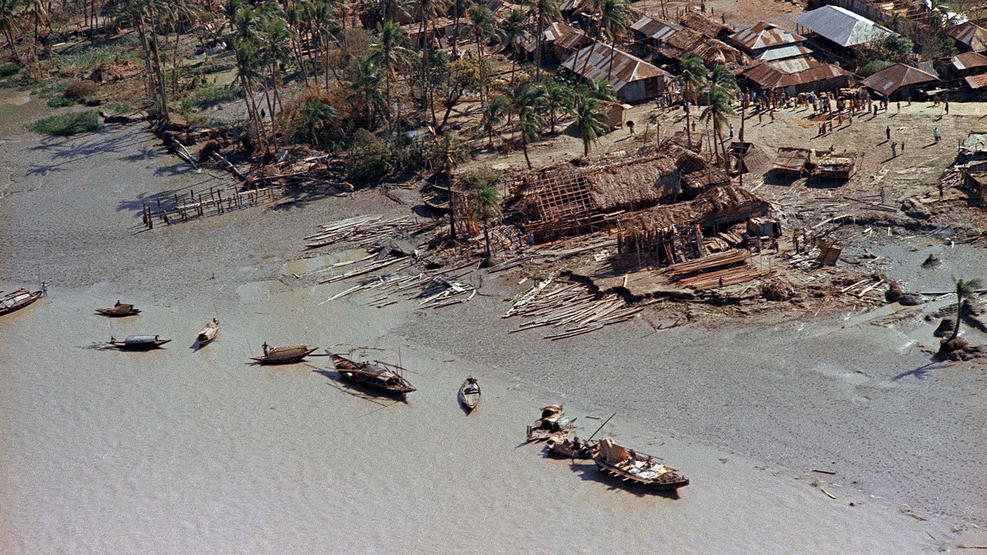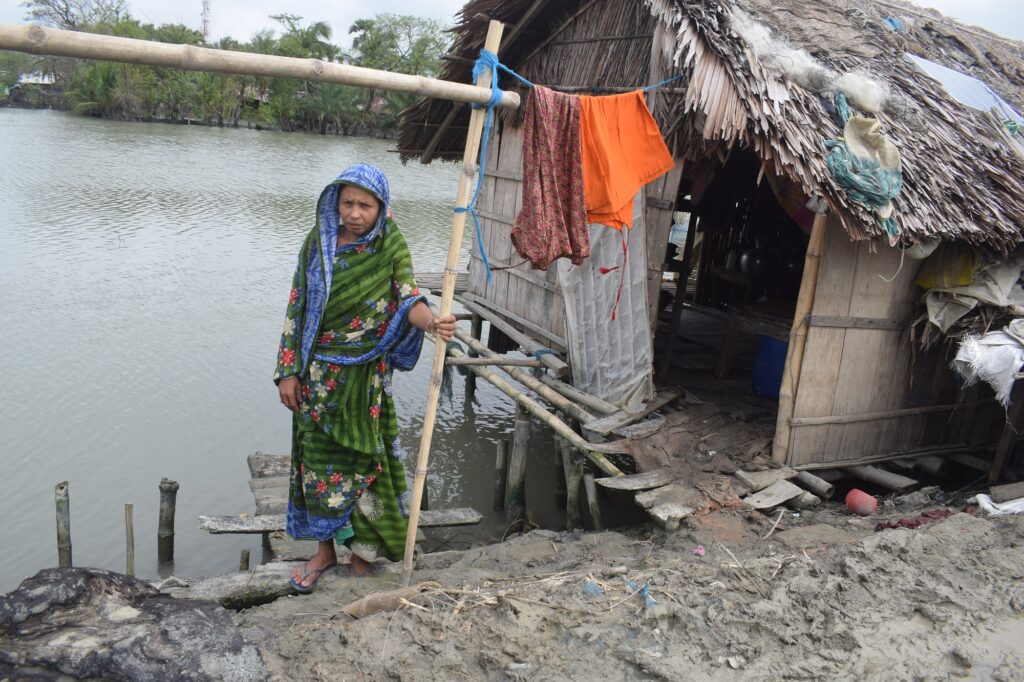“I was not supposed to survive,” said 86-year-old Mofiza Begum, a resident of Monpura upazila in Bhola district of Bangladesh. She’s lived a full life but is still haunted by a cyclone that struck their coast 50 years ago on November 12, 1970, when Bangladesh was still East Pakistan, and turned her life upside down. “I was swept away by the waters into the mouth of the river Karnafuli in Chittagong. My baby girl slipped from my hand and into the raging waters. I rode on the back of a dead cow for seven days. A man from a ship came and saved me. I never expected to live,” she told Gaon Connection, her face crumpling up with grief with those memories.
Official estimates put the number of those who perished at 500,000. Till date, it is said to be the fiercest cyclone that has hit this coast. Unofficial estimates say the number of dead is close to a million. The wind was howling (it was later recorded to be between 185 kilometers an hour and 205 kilometers an hour) and the grey skies opened up. There was water everywhere.
Many people in the coastal region of what would later become Bangladesh lost their relatives in the cyclone. Many families were totally wiped out, and villages lost half their residents. Children and teenagers were left orphaned and had to cope with life without any family support. They are in their 50s or sexagenarians now.

Five decades after one of the deadliest cyclones to strike Bangladesh, Gaon Connection revisits the disaster as it caught up with the survivors whose lives are still scarred by the trauma they suffered as they spent days with corpses all around them.
Habibur Rahman, a 76-year-old senior journalist from Bhola district, said his ears still ring with the cries of hungry people. He was a university student when the cyclone struck. “There was no food and people were sharing space with decaying corpses, because there was nowhere to go. Those in remote areas suffered the most, and there was no access to relief. It was a horrible sight. But, there was no way of sending that news to Dhaka,” he told Gaon Connection.
The fear of the 1970 cyclone lives on even in those who were not yet born when it struck the coast. That’s because, till date, those living on the Bangladesh coast face nature’s fury with alarming regularity, year after year. And every time that happens, memories of 1970 come up again.

“I am terrified when we get a cyclone signal or alert. Every year, I fight with nature and survive. It has a big impact on our housing and employment. River erosion pushes our houses back every year. But, we are resilient,” said Alauddin Master, 49, a resident of Telir Char in Ramgati upazila of Laxmipur coastal district. He has moved home five times so far.
The Disaster Forum, an organisation that monitors the situation on the Bangladesh coast, said that more than three million people living off the coast in Bangladesh are at risk of various natural disasters. Already, this year, there have been many high tides, and some village elders say they have not seen something like this since the big cyclone. The floods this year affected over five million people and one-third of the coastal country was under water, as reported by Gaon Connection.
Fifty years after Bhola, not all the people in the country’s coastal areas have been protected from natural disasters and there is a lack of initiatives, but Bangladesh is fast gaining a reputation with the international community in disaster management.

What happened on November 12, 1970
The cyclone washed away entire villages along the coast of Bangladesh. The World Meteorological Organization has categorised Bhola as the ‘deadliest tropical cyclone’. Strong winds came in from the south-east of Bangladesh (then East Pakistan) and there was a downpour. Suddenly, the water rose and the entire coast was under a 20 feet (six metre) storm surge. When the rain and wind stopped, people thought the worst was over. And then, a stronger wind from the north-west blew everything in its path.
People, cattle and houses were washed away. The next day, corpses were piled up everywhere and the affected areas were full of rubble.
Among the worst hit places were Bhola, Monpura, Tajumuddin, Daulatkhan, Charfason, Dhalchar, Kukri Mukri, Hatia, Ramgati, Char Abdullah, Sadwip, Dhalchar, Char Jabbar, Barguna, Patuakhali and Chittagong.
The cyclone killed 46 per cent of the population of Tajumuddin, a coastal upazila in Bhola. Out of 167,000 residents, only 77,000 made it alive. It was reported then that the gale blew at 185 kilometers an hour for three full minutes and 205 kilometers an hour for a minute. That was enough to wreak monumental damage.

Political ramifications
This cyclone had political implications too. General elections in 17 coastal constituencies were postponed, and held only on January 17, 1971.
The cry for liberation of East Pakistan (now Bangladesh) intensified after the cyclone. The then government did not rush in to help the affected areas, and the entire east of the country was angry. The then President of Pakistan Yahya Khan was slow to respond and visited after a fortnight on a seaplane, according to a memoir by top Awami League leader Tofail Ahmed.
Accusations flew thick and fast that this was a human disaster too, as the local government did not broadcast the weather report in time. As a result of this, the damage to life and property was tremendous. In protest, more and more people took an active part in the liberation war.

Advancements in cyclone warning
Cyclone warning systems in the country have improved since its independence in March 1971. Many cyclone shelters and embankments have been built and roads constructed. Because of this, the number of deaths due to disasters has come down and the amount of infrastructure damage has reduced. But experts warn that there is still scope for progress. For instance, the height of embankments has not been increased and the cyclone warning system needs to be upgraded.
Many people in remote areas of Bangladesh’s coastal areas still live in fear of natural disasters. When the tide rises, people are plagued by fear of the cyclone they have either experienced or heard of. Like the people of Shahpari Island in Teknaf on the east coast of Bangladesh. Houses and crop lands are getting submerged in tidal water and the island has shrunk due to the erosion of the sea.

Hatia, the traditional island of Noakhali, is getting smaller, said a source from the Union Parishad. Nalchira, Sukhchar and Tamruddi are constantly breaking. “Sukchar Union is on the verge of disappearing, said Anwar Hossain, 72, a resident. “Of the nine wards, only three remain. Many families have left the area,” he told Gaon Connection.
Gawhar Naeem Wara, convener of the Bangladesh Disaster Forum, said that in his assessment, Bangladesh has come a long way in 50 years, in disaster management. He calls for construction of better cyclone shelters and building disaster-tolerant homes in high-risk areas.
Wara also calls for a change in getting the cyclone warning across to people. Currently, cyclone warning messages are issued on a port-basis — around the port — and people are brought to the shelter. He calls for a system that is area-based, so that every person understands the message and reaches the shelter without difficulty.

Transparency International Bangladesh’s climate finance analyst M Zakir Hossain Khan said the country has to ensure the community-led disaster management at all areas especially climate vulnerable zones.
Since 2016, November 12 is being observed as Coastal Day. One of the goals is to remember the people who died in the cyclone five decades ago. At the same time, this day is used to speak about the rights and justice of the people of the coast.
If things improve, it might offer some succour to people like Mofiza Begum, who still mourns her little girl who slipped from her hands 50 years ago.


















